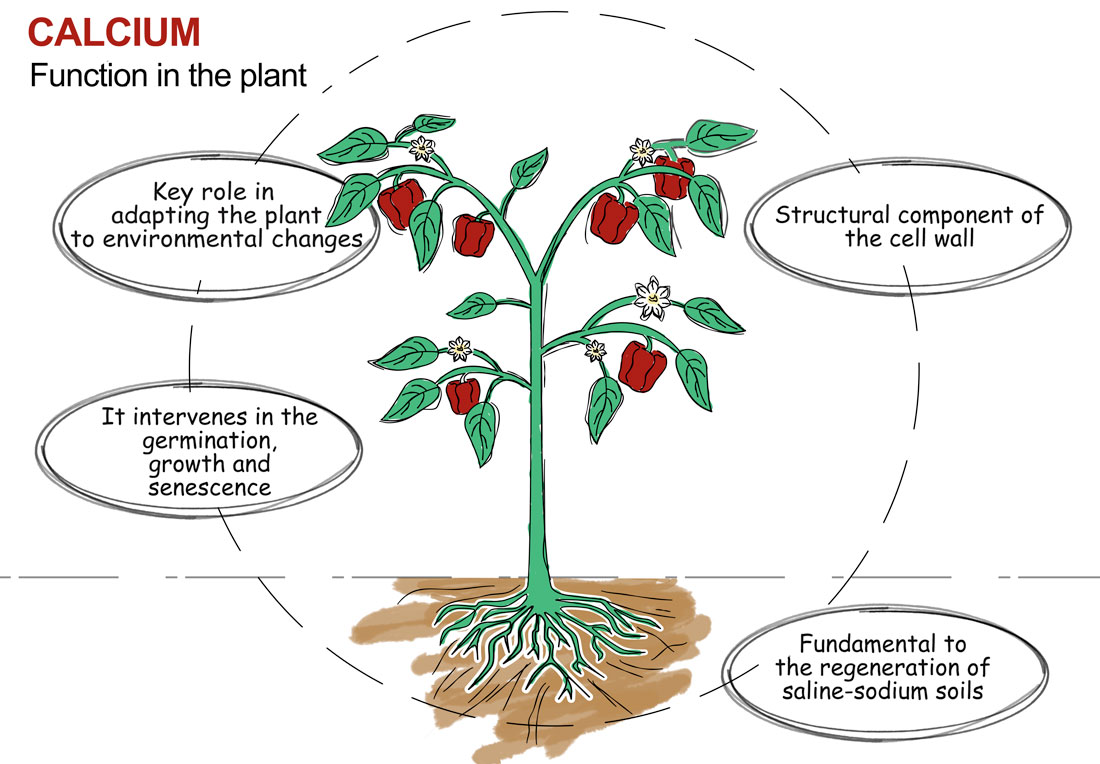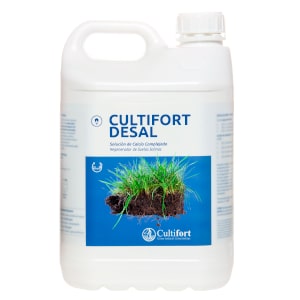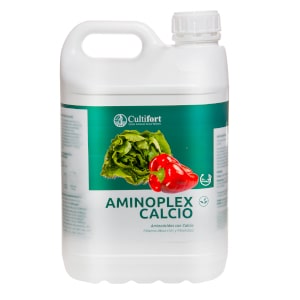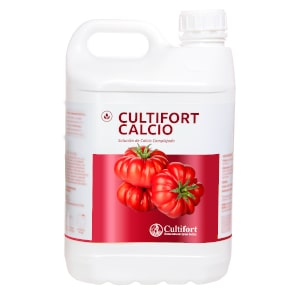Ca
Calcium (CaO)
Calcium
Calcium is the structural component of the middle layer of the plant cell wall, where it fulfills a cementing function as calcium pectate. It is responsible for preventing damage to the cell membrane, avoiding the release of intracellular substances and thus maintaining the integrity of the membrane.
Calcium acts as a second messenger in the functioning of some hormones and in environmental responses. On one hand, it acts as an enzymatic modulator for plant hormones, regulating germination, growth and senescence. On the other hand, small variations in the concentration of Ca2+ can trigger mechanisms of adaptation and environmental response, against changes in pH, light, temperature and others that may take place in the environment.
Calcium is also essential for the regeneration of saline-sodium soils to produce flocculation of clays by exchanging sodium ions for calcium, which improves the structure and quality of the agricultural land.
ABSORPTION
The natural state of calcium absorption is by root in the form of Ca+2, and can also be absorbed through the leaves.
Calcium is plentiful in most soils, although it is limited in acid soils with rains, where the contribution of carbonates is necessary to raise the pH.
DEFICIENCIES
Calcium is not a mobile element, so the plant depends on the perspiration process for the roots to absorb it from the soil solution. Any factor that alters the rate of perspiration, such as high humidity, or extreme temperatures, can cause calcium deficiency even if there is a normal level of calcium in the soil.
An increase in soil salinity could also cause Ca+2 deficiency, by decreasing water absorption from the plant.
The first symptoms of calcium deficiency appear in the plant where it sweats water, that is, the young leaves and fruits. The leaves appear chlorotic, rolled and curly. In addition, root development is delayed, and the fruits suffer problems such as claret or creasing of citrus fruits, cracking or splitting of citrus and fruit trees, aseptic tomato rot or blossom end rot. Calcium deficiency also inhibits pollen germination and pollen tube growth
CULTIFORT PRODUCTS FOR THE LACK OF CALCIUM






